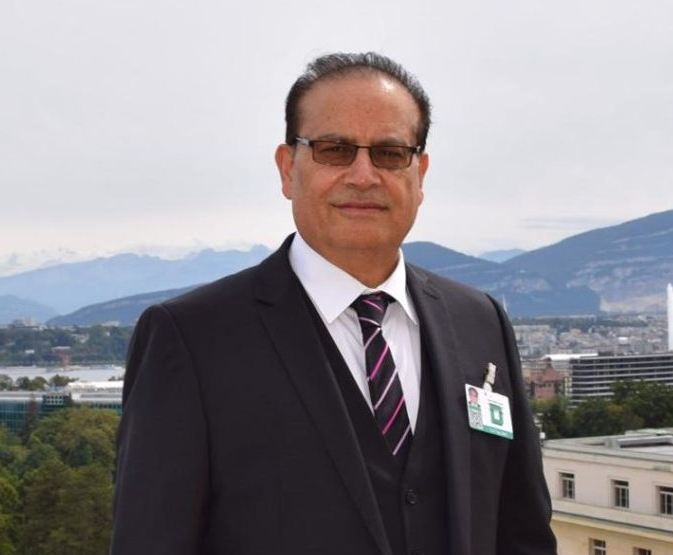By Qamar Bashir
I vividly recall that the decision to use imported coal in Sahiwal power plant was made as part of the agreements under CPEC. The project was initially agreed upon in 2013 during the visit of the then Prime Minister Nawaz Sharif to China, where various energy projects, including the Sahiwal plant, were included in the CPEC framework. The construction began
in 2015 and it started production in May 2017 with a total capacity of 1,320 MW incurring a cost of $1.8 billion. Being one of the most efficient plants, its levelized tariff (the average cost over the life of the plant) is around PKR 8-9 per kWh (approximately USD 0.05-0.06 per kWh).
Interestingly, the plant, from the conception to completion was during the period when Mian Nawaz Sharif was in power in the center and Shahbaz Sharif was the Chief Minister in the province of Punjab. This decision to use imported coal was made by both the leaders with stark awareness and knowledge that the indigenous and much cheaper Thar coal was available for power production.
The decision by the Sharif brothers not only surprised me but also baffled many national and international analysts and power experts. Another surprising decision was selecting Sahiwal as the project site, despite it being far from major consumption centers like Lahore, Karachi, and Faisalabad, as well as distant from the Karachi or Gwadar ports. This location inevitably led to additional costs for transporting imported coal from the ports to Sahiwal and transmitting electricity from Sahiwal to the country’s main consumption areas.
Despite these clear disadvantages, both Sharifs stubbornly pursued the Sahiwal plant without any sound economic or financial justification. The project’s objectives and scope were finalized, agreed upon, and signed, fully aware that the Sahiwal project was fraught with uncertainties and was primarily driven by the desire to gain political capital, resulting in high transmission and distribution costs and the expense of imported coal.
Now, in a sudden and characteristic move, Mr. Shahbaz Sharif has abruptly decided to change the direction of the Sahiwal coal power project without proper consideration or consultation with stakeholders, putting the entire project’s fate in jeopardy.
In project management terms, this change of scope is akin to initiating another capital-intensive undertaking and a nightmare for engineers and technologists. Once a project is completed and handed over to the investing party, any change in scope becomes a separate, exclusive, and independent undertaking.
It would involve a comprehensive project initiation, starting with the development of a project charter, stakeholder identification, and a feasibility study to assess technical, economic, and environmental viability. The planning phase would include defining the project scope, developing a detailed work breakdown structure (WBS), scheduling, cost estimation, resource allocation, risk management, and establishing a communication plan. During execution, the focus would be on detailed engineering design, procurement of necessary equipment, logistics planning for Thar coal transportation, and retrofitting the plant.
Quality control measures would be implemented throughout construction and installation. The project would proceed with rigorous testing, commissioning, and ongoing monitoring to ensure the plant’s efficiency and compliance with standards. The project would conclude with final inspections, handover, post-implementation review, and formal closure, followed by post-project support and continued performance monitoring to ensure the long-term success of the plant’s operation with Thar coal.
If the Sharif Brother could have taken the right decision to use Thar coal from the very start of this project, it would have provided significant long-term benefits, including lower initial capital costs by eliminating the need for later retrofitting and reducing fuel costs through the use of a domestic coal source. It would have enhanced Pakistan’s energy security by decreasing reliance on imported coal, providing a stable and predictable supply chain, and fostering local economic development by boosting the Thar coal industry and creating jobs.
Environmentally, the plant would have minimized transportation emissions and could have incorporated advanced emissions control technologies tailored to Thar coal. Operationally, the plant would have been optimized for Thar coal’s specific properties, improving efficiency and long-term reliability. Strategically, this early adoption would align with Pakistan’s sustainable energy goals, driving innovation and contributing to a more self-sufficient energy future.
If the Sahiwal Coal Power Plant had utilized Thar coal from the beginning, Pakistan could have potentially saved approximately $2.058 billion over seven years, from 2017 to 2024. These savings would stem from the lower cost of Thar coal, which is domestically sourced and significantly cheaper than imported coal, as well as reduced transportation and handling expenses due to the proximity of the Thar coalfields. By avoiding the higher costs associated with importing and transporting coal, the country would have benefited from substantial economic advantages, contributing to greater energy independence and overall cost efficiency.
The conversion of the Sahiwal Coal Power Plant from imported coal to Thar coal is estimated to cost between $330 million and $555 million. This figure includes the necessary modifications to the plant’s systems, such as boilers, combustion, and emission controls, as well as upgrades to transportation infrastructure, with costs ranging from $240 million to $410 million. Additionally, the estimate now accounts for detailed design and engineering costs, which could add $20 to $30 million, along with consultancy fees and legal services estimated at $20 to $35 million, encompassing feasibility studies, project management, and regulatory compliance.
The billion-dollar question is: who will hold accountable those responsible for the imprudent, illogical, and shortsighted decision to run the Sahiwal power plant on imported coal, resulting in losses exceeding $2.08 billion? Now, with the reversal of this decision costing an additional $555 million, the total loss amounts to $2.635 billion.
The PML(N) stalwarts bear responsibility for increasing electricity tariffs, making power unaffordable for many Pakistanis. Their faulty decisions have escalated circular debt, depleted precious foreign exchange, and hurt Pakistani industry by making products uncompetitive due to expensive electricity. As a result, they have undermined exports, further impoverishing the country.
In conclusion, consumer groups, industrial consumers, and chambers of commerce should urgently seek judicial intervention to hold accountable those responsible for these financially and commercially unviable decisions. The National Assembly and Senate committees must also take action against the reckless misuse of the nation’s resources, ensuring those who caused this economic harm are held to account. To mitigate the losses, the Sahiwal plant could be sold on the international market, with the proceeds either invested in a new plant near Thar’s coal reserves to reduce costs or directed towards wind and solar farms to lower electricity prices and protect the environment. Alternatively, the decision to convert the Sahiwal plant to Thar coal could be reconsidered, and the $555 million that would have been spent on reconfiguring the plant could instead be used to establish wind and solar farms, thereby reducing the overall per unit cost of electricity from Sahiwal.
By Qamar Bashir
Former Press Secretary to the President
Former Press Minister to the Embassy of Pakistan to France
Former MD, SRBC, CEO, ATV












